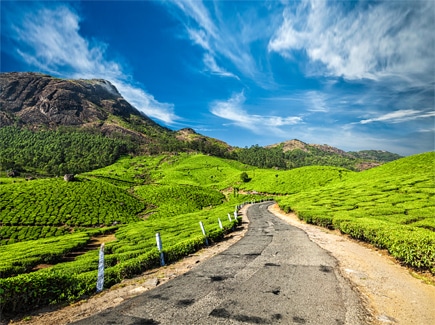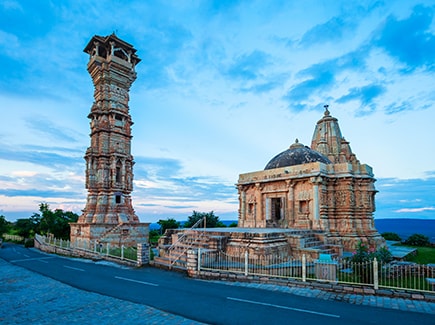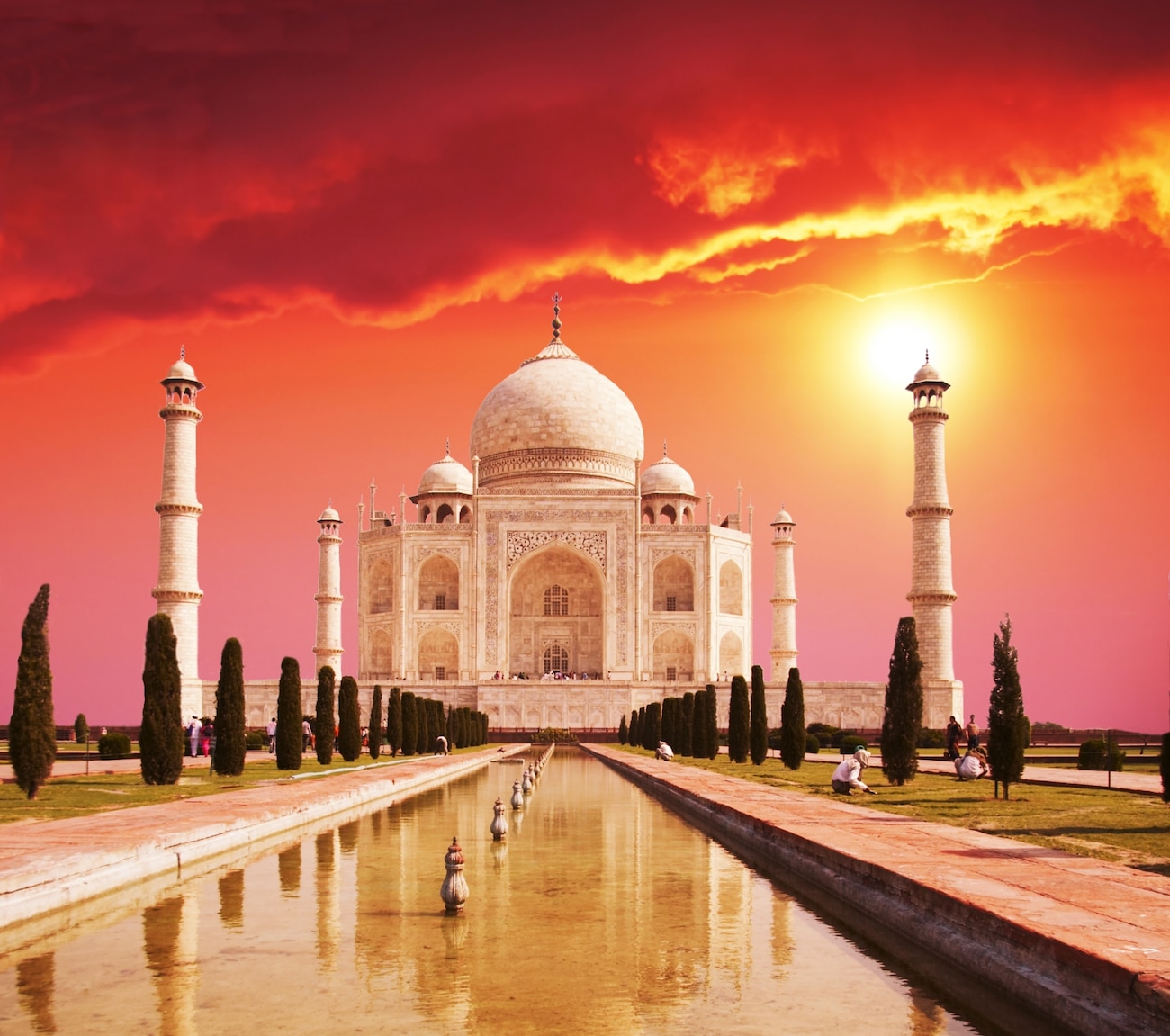Published in the Sunday Mumbai Samachar on 11 February, 2024
Imagine a monument that stands as an emblem of undying love, not only in its timeless structure but in the ethereal dance of its colours as the sun stretches across the sky. The Taj Mahal, an architectural masterpiece that transcends time and culture, is not only a testament to human ingenuity, but also a canvas of nature's artistry.
We all know how beautiful the Taj Mahal really is. But what if I were to tell you, that just one visit to the Taj Mahal is never enough. Not even two. But a full four visits are required to really explore the Taj to its fullest. Let me explain. And to do this today, lets do a deep dive and explore the secrets behind the Taj Mahal's sparkling palette, delving into why witnessing these transitions is not just a journey through a day, but through history, architecture, and the human heart. So let’s go ahead and explore a profound experience that awaits us within the walls of the Taj Mahal.
The Break of Dawn
Let’s first start with the the Break of Dawn. Witnessing the Taj in a Golden Embrace of Sunrise. As the world stirs from the silver veil of night, the Taj Mahal stands enshrouded in the first light of day. The spectacle at dawn is not just a visual marvel; it's an awakening that breathes life into its every facet. The white marble, sourced from the mines of Makrana, casts an enchanting glow — a medley of pink and pale yellow that drapes the monument in a golden embrace. This is the prime hour for photographers who find sanctity in capturing the Taj's soft, emerging profile against the canvas of an Indian sunrise.
At this hour, there is a certain freshness palpable in the air, as if the marble itself is exhaling after a moon-lit night. The morning mist, 'Shabnam', cradles the monument, adding a poetic silhouette to the scene. It is a moment that is fleeting, yet etched in the soul of every spectator, immortalizing the splendor and serenity of the Taj's first blush under the morning sun.
Afternoon Sun
The afternoon sun, at its highest and brightest, offers a stark contrast to the break of dawn. As the midday's beams converge over the Taj Mahal, the metamorphosis is almost complete. Bathed in this vibrant light, the monument reveals itself in its truest form — a glistening testament to Mughal grandeur. The intricate carvings, bearing verses from the Qur'an, flower motifs, and delicate arabesques, bask in the sunshine, each story and symbol coming to life.
This is the hour for observation and discovery. Visitors can closely examine the genius behind every mosaic and calligraphic masterpiece; how the structure embraces Persian, Ottoman, and Indian styles in perfect harmony. The symmetry that underpins every design becomes apparent, and one begins to appreciate the meticulous craftsmanship that brought this vision into reality. It's a time for education and appreciation, as one journeys through the Taj's narrative, undisturbed by the shifting light of the day.
Marvels of Dusk
As the day wanes and the sun descends, the Taj Mahal — a structure that has witnessed the passage of empires — takes on a melancholic hue. The golden hour approaches, and this is where the Taj truly speaks to our hearts. Its reflection on the Yamuna becomes a mirror for the setting sun, with tendrils of warm light weaving through the domes and arches. The marble softens, bathing the grounds in a mellow radiance, and the mausoleum seems to stand in reverence, not just to its own architect, but to life's cyclical nature.
There is a quiet beauty at dusk; a sense of calm and contemplation that permeates the air. Visitors often pause, spellbound, as the Taj Mahal offers its most tender salutation to the night. It is a ritual for the senses, a transition that captures the profundity of change, both in the day that retires and the monument that stands immortal, casting its spell upon the silhouetted horizon.
Moonlit Taj
The tale of the Taj is not confined to the bounds of sunlight, for it is just as enchanting under the governance of the moon. Nightfall transforms the structure into something almost otherworldly. The full moon nights, in particular, bestow upon the Taj Mahal a surreal luminescence that seems to defy the dark. At this hour, it is not just a monument; it is a vision, a dream that whispers of Shah Jahan's eternal love for Mumtaz Mahal.
For two days before and after the full moon, the gates of the Taj are thrown open to those who seek solace and inspiration under the celestial glow. It is an experience that is as coveted as it is rare, as the Taj unveils its nocturnal visage. The hushed ambience is punctuated only by the lapping of the river and the occasional notes of a sitar, painting an atmosphere that is both mystical and romantic. This is the Taj Mahal at its most intimate, when its alabaster walls echo with love's immortal refrain.
The Taj's Journey Through the Seasons
Beyond the delineated hours of day and night, the Taj Mahal's four colors are also subject to the whims of weather and the ebb of seasons. In the winter's chill, the monument can appear a somber gray, wrapped in the fog that rises from the Yamuna. Spring brings with it a verdant backdrop that accentuates the Taj's pure white, while the torrid Indian summer leaves the monument gleaming in the sun's fiercest glare.
These variations reveal an ever-changing monument, as dynamic as the environment that cradles it. It is a reminder that the Taj Mahal is not static but, like life, in a constant state of transition. It is this impermanence that makes it a living work of art — one that travelers must revisit throughout the year to truly capture its many moods.
The Taj Mahal, thus, is a study not just in architecture and history, but in the harmonious union of man and nature. The changing hues of the Taj bear witness to a celestial design that dwarfs the brilliance of any human endeavour. As travel enthusiasts, our connection to this marvel of the world does not end with sightseeing, for the Taj is a living testament, inviting us to be part of an unfolding narrative.
To have seen the Taj Mahal at all hours is a privilege; to have witnessed the romance that plays out against its kaleidoscopic skies is an unparalleled journey. It is a journey that unfolds the true essence of travel — the embrace of the unknown and the discovery of boundless beauty. So let us not only catch the Taj Mahal at its golden hours, but let us be a golden hour in its own annals — temporary, yet everlasting.

































































Post your Comment
Please let us know your thoughts on this story by leaving a comment.